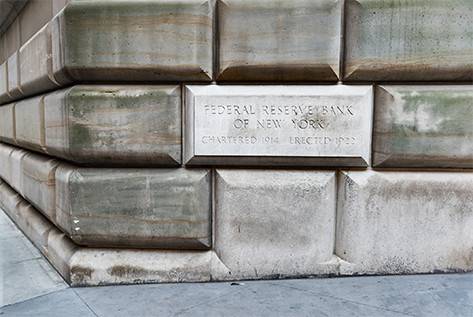The minutes of the Federal Reserve’s October meeting, released on Wednesday, showed that policymakers were divided over the decision to cut interest rates, reflecting disagreements about whether a cooling labor market or persistent inflation posed the greater threat to the economy.
Although the Federal Open Market Committee approved a rate cut at the meeting, the path for monetary policy in the coming period has become less clear. The divisions extended to expectations for December, with several officials expressing doubts about the need for an additional cut that investors had widely anticipated. “Many” participants said there would be no need for further easing at least through 2025.
The minutes stated: “A number of participants judged that an additional cut could be appropriate in December if the economy evolves as they expect between the two meetings. Many participants indicated that, under their economic scenarios, it would be appropriate to keep the target range unchanged for the rest of the year.”
In Fed language, “many” signifies a larger group than “a number of,” indicating a tilt against a December cut. But the term “participants” does not necessarily refer to voting members. Nineteen officials attended the meeting, but only twelve are eligible to vote, leaving the direction of the actual votes unclear.
These signals align with Chair Jerome Powell’s comments during the press conference after the meeting, where he emphasized that a December cut was “not a foregone conclusion.”
Before Powell’s remarks, traders had priced in an almost certain cut at the 9–10 December meeting. By Wednesday afternoon, those odds had fallen to less than one-third.
The minutes also noted that “most participants” still expect that more cuts may eventually be needed, though not necessarily in December.
Ultimately, the committee approved a quarter-point cut, bringing the federal funds target range to 3.75%–4%. The 10–2 vote, however, understated the degree of division within an institution known for its consensus.
Officials expressed broad concern about a softening labor market and persistent inflation that “has shown little evidence” of a sustainable move back to the 2% goal. The minutes highlighted several distinct camps within the committee.
“In this context,” the minutes said, “many participants viewed reducing the target range as appropriate at this meeting, while some supported the move but were also prepared to keep the range unchanged, and a number of others opposed a cut.”
A major point of contention was how restrictive policy currently is. Some participants judged that policy remained sufficiently tight even after the quarter-point cut, while others argued that “the resilience of economic activity” suggested policy was not restrictive enough.
Public remarks indicate a split between “doves” such as Stephen Miran, Christopher Waller, and Michelle Bowman, who favor cuts to protect the labor market, and “hawks” such as Kansas City Fed President Jeffrey Schmid, Boston’s Susan Collins, and San Francisco’s Alberto Musalem, who worry that further easing could hinder progress on lowering inflation.
In the middle are moderates including Powell, Vice Chair Philip Jefferson, and New York Fed President John Williams, who prefer a more cautious approach.
The minutes noted that one participant — a reference to Miran — favored a larger half-point cut. Schmid voted against the move, saying he preferred no cut at all.
The lack of government data for 44 days — due to the government shutdown — further complicated decision-making, since key labor, inflation, and other economic indicators were neither collected nor published. Agencies such as the BLS and BEA announced revised schedules for some releases, but not all.
Powell compared the situation to “driving through fog,” while Waller rejected that analogy earlier this week, insisting the Fed has sufficient information to make policy decisions.
The minutes also addressed the balance sheet. The committee agreed to halt the runoff of Treasuries and MBS in December — a process that has already reduced the balance sheet by more than $2.5 trillion, though it still stands near $6.6 trillion. Support for ending quantitative tightening appeared broad.


